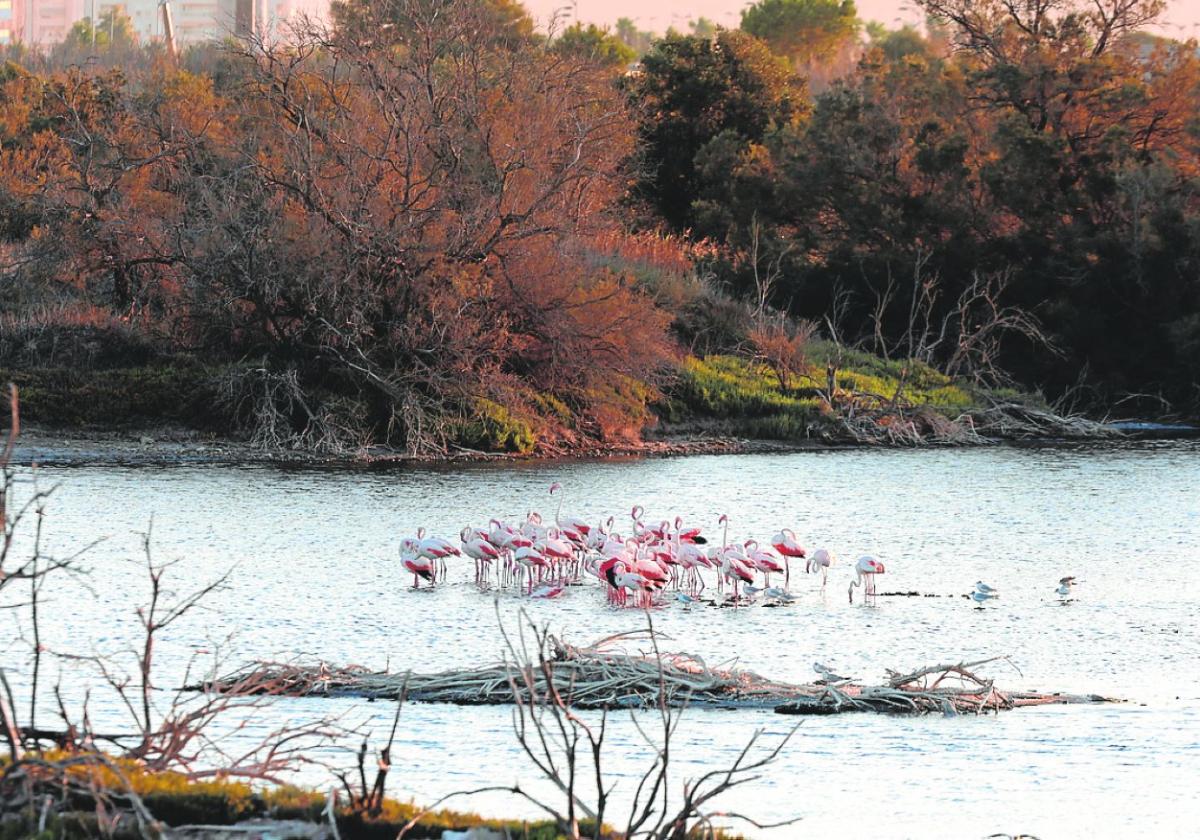
Ver 30 fotos
Sections
Highlight

Ver 30 fotos
Matías Stuber
Malaga
Friday, 4 August 2023, 10:42
A flock of fifty flamingos has been spotted at the nature reserve at the mouth of the Guadalhorce river in Malaga, the only lagoon in Europe that is located in a city, just a bird's swoop from Malaga Airport.
The flamingos are a rare and beautiful spectacle. Some of the birds tuck their heads into their plumage and lie down to sleep. Others stick their long necks in the water to drink and find food. They move gracefully and effortlessly, managing to balance themselves on one leg, their pink plumage glowing in the first rays of the sun.
Spotting flamingos at the mouth of the Guadalhorce requires perseverance and patience. This is only a passing place for these birds. Unlike in Fuente de Piedra or Doñana, flamingos do not nest in Malaga. Seeing this group of flamingos, when Fuente de Piedra has dried up in the drought, increases the importance of this sighting. Antonio Tamayo, one of the Junta de Andalucía's environmental rangers who patrols the area, defines the 'Desembocadura del Guadalhorce', as the area is called on the maps, as follows: "It is a diamond in the rough, because of its location so close to the centre of the city".
A small movement, a noise, however slight it may seem, is enough for the flamingos to be startled and take to the sky. In flight, they disappear in a straight line under the brightness of the sun and only the power of a camera lens is able to capture this graceful movement. Their bodies become streamlined in the air and merge parallel with the horizon.
The flock in question continues its show and, after taking to the skies, descends once again to one of the wetlands of the Guadalhorce estuary nature reserve.
The different lagoons are like patches of carpet. Each patch is a different habitat space that offers easy accessibility for people from Malaga and visitors. Doñana, for example, cannot be explored beyond the radius marked out from its visitors' centre.
In the Desembocadura del Guadalhorce there are no barriers to mobility, other than those established by the physical condition of each visitor.
Flamingos are strange birds. Their legs point backwards when bent. They use their beaks upside down. If there is such a thing as yoga in the animal world, flamingos are the best students of it. They are also good swimmers and have the ability to cover long distances. What they like best, however, is to stand in the water. They have long legs and necks because they feed mainly on planktonic algae and small crustaceans that they filter from the water and the muddy surface.
Malaga province's Fuente de Piedra lagoon usually attracts thousands of flamingos every year, but it is without water due to the drought, causing these animals to just pass it by.
The mouth of the Guadalhorce is also one of the stopover points for other exotic birds such as the kingfisher, the spoonbill, the black stork, the Audouin's gull or the red-billed guillemot. It is a natural sanctuary near to the centre of the city that is always worth a visit.
Noticia Patrocinada
Publicidad
J. Gómez Peña y Gonzalo de las Heras (gráfico)
Encarni Hinojosa | Málaga, Encarni Hinojosa y Antonio M. Romero
Sara I. Belled y Jorge Marzo
Esta funcionalidad es exclusiva para registrados.
Reporta un error en esta noticia

Debido a un error no hemos podido dar de alta tu suscripción.
Por favor, ponte en contacto con Atención al Cliente.

¡Bienvenido a SURINENGLISH!

Tu suscripción con Google se ha realizado correctamente, pero ya tenías otra suscripción activa en SURINENGLISH.
Déjanos tus datos y nos pondremos en contacto contigo para analizar tu caso

¡Tu suscripción con Google se ha realizado correctamente!
La compra se ha asociado al siguiente email
Comentar es una ventaja exclusiva para registrados
¿Ya eres registrado?
Inicia sesiónNecesitas ser suscriptor para poder votar.